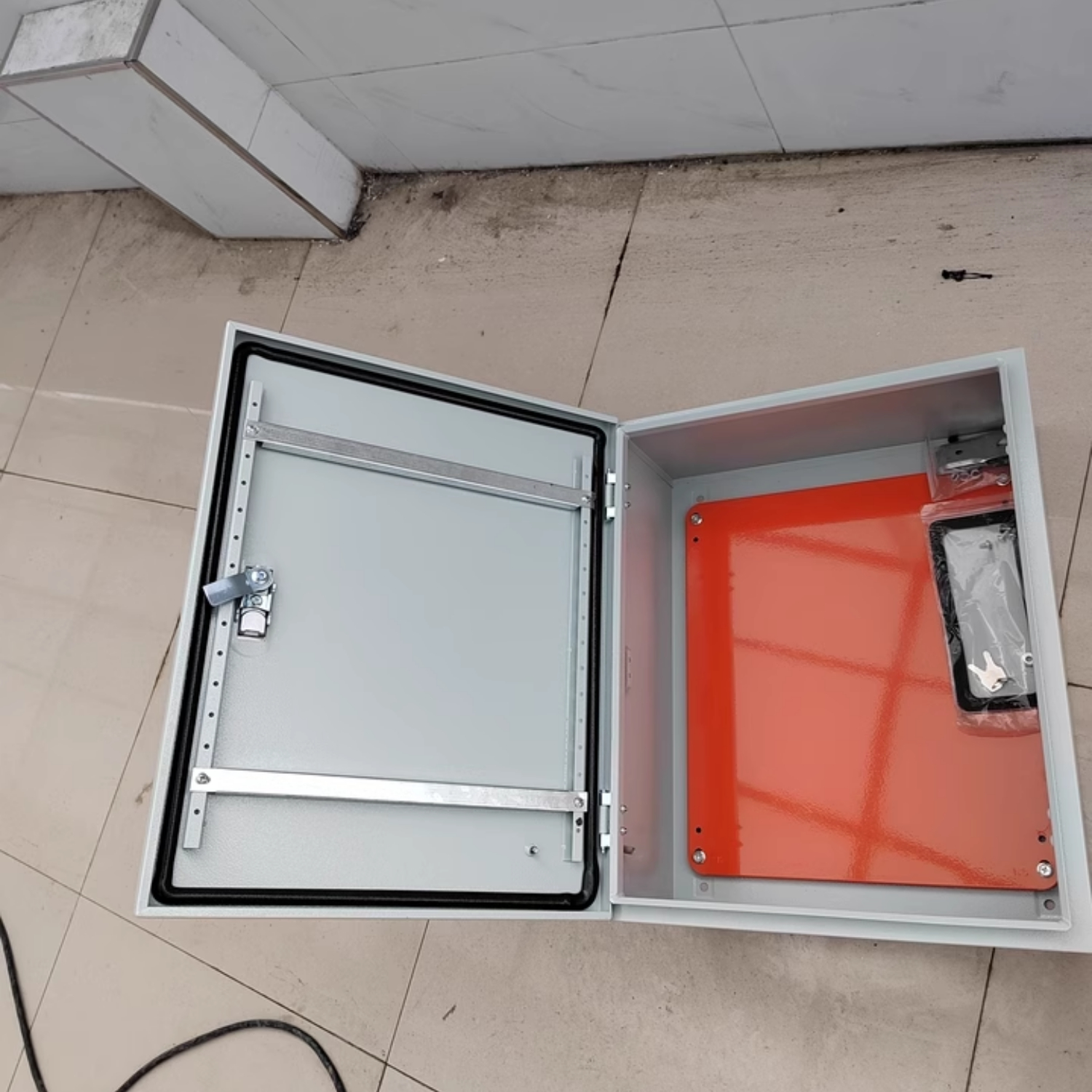Home / News / Industry news
Industry news
Aug 24,2025
By:Shinging
In the 21st century, our planet is perpetually buzzing with electromagnetic interference (EMI). The countless devices and appliances we utilize daily generate these electromagnetic disturbances, along with some natural phenomena.
Humans are unable to sense this interference, but various crucial electrical and electronic devices can detect it. Excessive interference to a machine can cause significant issues with its performance and dependability. Therefore, many device manufacturers create their products with integrated systems that minimize or negate the impacts of EMI.
These EMI shielding systems utilize numerous techniques to safeguard our essential devices against interference. If you create, produce, or utilize equipment that is susceptible to EMI, having a fundamental understanding of how this effect operates and how to mitigate it is essential.
This article examines the basic principles of EMI and the prevalent types of interference. Next, we will showcase several Shinging enclosures that provide integrated EMI shielding for delicate equipment.
What is EMI?
EMI, in basic terms, refers to the unwanted electromagnetic radiation being transferred to an electronic or electrical device. These signals disrupt a device's functionality and may result in serious damage. EMI can arise from various sources, including both natural and artificial ones.
Typical home and office devices rank among the primary sources of EMI. Certain devices, like TV remote controls, generate relatively minor and feeble fields. Others, such as microwave ovens and smartphones, generate more powerful versions.
When these areas interact with other devices, they may generate harmful interference. Moreover, EMI does not necessarily need to come from an external source. Internal EMI occurs when one component of a device creates interference in another component, which is a frequent source of issues.
Frequent issues arise from upstream problems regarding the quality and conditioning of power sources, and the interaction of these two forms of internal EMI can present significant challenges for device designers and builders.
As if those sources weren't problematic enough, nature itself can produce EMI. Atmospheric events such as thunderstorms and solar storms naturally emit electromagnetic radiation, and they can produce comparable harmful impacts on electrical devices. Radio frequency interference (RFI) may come up in conversations about EMI, as both terms are frequently discussed together or used interchangeably.
RFI is a category of EMI that resides in the portion of the electromagnetic spectrum referred to as the radio frequency (RF) band. This type of interference is particularly prevalent since numerous devices, such as various standard power switching equipment and electric motors, can emit signals at frequencies within this spectrum.
The Two Primary Categories of EMI
Two particular forms of EMI account for most of the disruption in electrical and electronic equipment. Understanding the distinction between these two kinds and how to differentiate them will assist in identifying the source of EMI issues in your devices and enable you to assess solutions more efficiently.
Ambient EMI, often known as radiated EMI, is a form of EMI that stems from other devices or natural events capable of causing EMI disruptions. This encompasses a wide array of the previously mentioned typical home and office gadgets, along with natural occurrences such as solar magnetic storms and lightning strikes.
Power Quality EMI: Known as conducted EMI, this form of EMI arises from different disturbances and irregularities in the device's power supply. These consist of power outages, voltage dips and surges, and electrical interference.
Certain subsets of EMI influence devices and systems in specific application categories. Three key types of application-specific EMI are:
Deliberately Created EMI: This kind of EMI arises from events such as nuclear electromagnetic pulses (NEMPs) employed by the military to interfere with device functions. Deliberately produced EMI usually emerges as a significant issue in particular areas, like military and essential infrastructure systems, yet it often necessitates the most stringent measures to address.
Railroad and Mass Transit System EMI: The electric systems powering modern rail transit are vulnerable to unique types of EMI. Third rail footwear, train signaling systems, additional trains, and electrical power lines can all generate EMI, posing potentially dangerous risks for the safe functioning of mass transit networks.
Medical Device EMI: Environments in hospitals and clinics contain numerous devices that can emit and receive EMI, such as patient monitoring systems, medication pumps, imaging equipment, and various other typical devices. This generates a significant amount of background EMI in numerous healthcare environments, and the rising implementation of medical IoT devices suggests that this issue will probably become even more common.
Effects of EMI
EMI and RFI can impact numerous technologies and lead to various issues. Typical performance problems that EMI can lead to include:
Alteration of video and audio signals
Challenges in forming wireless connections
Interruption of regulation and oversight systems
Excessive heat and combustion (in severe situations)
Common tech issues and challenges
Here are several categories of devices particularly susceptible to EMI:
Healthcare instruments
Wireless routers
Machines that process data and execute tasks at high speed.
GPS devices
Mobile Phones
Infant monitors
Two-way radios
Television broadcasting
AM and FM broadcasting
Ironically, many devices that are highly vulnerable to EMI are also the same ones that are most affected by it. One reason troubleshooting EMI issues can be so frustrating is that it operates as a two-way street, where devices can transmit and receive interference simultaneously.
Comprehending EMC Criteria
The U.S., European Union, and numerous other nations have rules called electromagnetic compatibility (EMC) standards that regulate EMI emissions from electrical equipment. EMC standards require that devices that can emit EMI must not disrupt specific essential technologies, including medical equipment and emergency notification systems. The details of EMC standards can differ significantly, making it crucial to know which common EMC standards your device must adhere to. Some hold essentially the same fundamental information, while other standards, like those for aerospace or medical devices, are very specialized for their purposes. Standards differ from country to country, although several nations have aligned theirs with others to promote trade.
EMI Shielding: Frequent Methods and Tools
EMI shielding involves employing different strategies to safeguard electrical and electronic devices against EMI. Altering techniques for EMI shielding commonly encompass:
Numerous designers of electrical devices will choose an enclosure box constructed from conductive metals such as aluminum or steel because of the inherent EMI shielding these metals provide. A well-designed metal enclosure can absorb and redirect interference instead of letting it reach the internal device. Aluminum, copper, silver, and different types of steel are all metals frequently utilized due to their inherent resistance to EMI.
Outfitting an electronics enclosure with an EMI-shielded gasket can assist in reducing EMI in a device. These gaskets are crafted from typical materials such as neoprene, but they feature conductive metal linings like expanded aluminum or wire mesh that transform the gasket into a conductive shield against EMI.
Conductive spray coatings represent an alternative method for providing EMI resistance to an enclosure. These coatings utilize highly conductive metals such as copper or nickel in a spray application that can be used on non-conductive materials like polycarbonate, offering an efficient method to enhance EMI resistance across various types of device enclosures.
Utilizing EMI-shielded cables can be a successful method to address the various EMI-transmitting characteristics of electrical cables. Cables are capable of both transmitting and detecting EMI, while shielded cables can minimize susceptibility to both. This renders them a vital and efficient component of the toolkit for enhancing a device's EMI resilience.
Numerous device designers incorporate electronic filter circuits into a device’s key components to minimize their susceptibility to EMI. The extensive variety of filter designs that can be adjusted to allow specific frequencies while blocking others makes them a widely adaptable and favored option for managing EMI in various devices.
Grounds frequently serve as a source of ongoing EMI, as the frequencies present in a high-impedance ground can generate a “noise voltage” that is difficult to remove. Employing low-impedance grounding methods is usually the most effective approach to manage ground EMI.
Shinging EMI Shielded Enclosures
Numerous typical applications for Shinging enclosures necessitate EMI shielding. Our clients utilize our enclosures for a variety of purposes, ranging from industrial controls to scientific devices, where interference must be avoided in these sensitive and delicate applications. That’s the reason Shinging provides a comprehensive selection of enclosures equipped with EMI shielding capabilities. Several of our top indoor and outdoor enclosure models, including those made from stainless steel and aluminum, offer a natural degree of EMI/RFI reduction. This renders them an excellent option for devices sensitive to EMI.

The global shift towards renewable energy has made solar energy the cornerstone of sustainable infrastructure. For commercial professionals supervisin...
Dec 18,2025 / Industry news
In industrial infrastructure, selecting enclosure materials for Power distribution cabinet Enclosure is a crucial choice influencing durability, cost ...
Dec 16,2025 / Industry news
In industrial and commercial environments, electrical junction box enclosures are important protective tools for electrical systems. These enclosures ...
Nov 25,2025 / Industry newsOnline

Provider of Complete Metal Manufacturing Solutions
+86 18939857433
1188 Jiu Ye Road, Shanghai, China
11561 N Lamar Blvd,Austin,Texas,United States of America,78753
Gyeongin-ro 56-gil 8, ,3F jjbeauty,Guro-gu,Seoul,Guro-gu,Seoul,Republic of Korea
Top
Copyright © 2025 Shinging Technology Co., Ltd.,
Power By Bontop